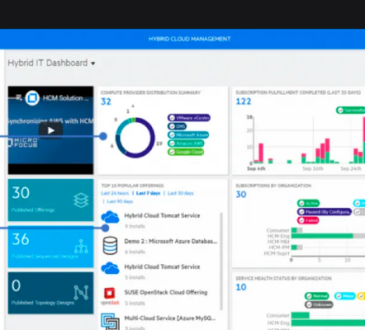
In today’s fast-paced digital landscape, organizations are increasingly turning to hybrid cloud solutions to combine the benefits of on-premises infrastructure with the agility and scalability of the cloud. However, as data regulations and compliance requirements become more stringent, businesses must navigate the complexities of maintaining compliance in a hybrid cloud environment. This article will delve into the concept of hybrid cloud compliance, discussing its importance, challenges, best practices, and the evolving landscape of compliance in the digital era.
Contents
Understanding Hybrid Cloud Compliance

Hybrid cloud compliance refers to the set of rules, regulations, and security measures that organizations must adhere to when deploying and managing a hybrid cloud infrastructure. It involves ensuring that data and applications are properly protected, privacy regulations are respected, and industry-specific compliance requirements are met. With hybrid cloud environments combining on-premises infrastructure, private cloud, and public cloud services, compliance becomes a multifaceted challenge.
Importance of Hybrid Cloud Compliance
Compliance is vital for organizations across industries due to several reasons:
Data Security: Compliance regulations aim to safeguard sensitive data, protect customer privacy, and prevent unauthorized access or data breaches. Hybrid cloud compliance ensures that data is adequately protected regardless of its location or transfer between on-premises and cloud environments.
Legal and Regulatory Requirements: Many industries, such as finance, healthcare, and government, have stringent regulations concerning data privacy, residency, and retention. Organizations operating in these sectors must comply with specific industry standards to avoid legal consequences.
Customer Trust: Demonstrating compliance with data protection regulations builds trust among customers, who are increasingly concerned about their data’s security. Compliance certifications and adherence to industry best practices can enhance an organization’s reputation and attract more customers.
Challenges in Hybrid Cloud Compliance

Achieving and maintaining compliance in a hybrid cloud environment comes with various challenges:
Data Governance: Hybrid cloud infrastructures generate complex data flows that require careful management to maintain compliance. Organizations must identify data sources, monitor data movement, and enforce policies for data access, storage, and retention.
Data Residency and Sovereignty: Compliance regulations may require data to be stored within specific geographical boundaries or subject to specific privacy laws. Organizations must navigate these requirements while leveraging the benefits of a hybrid cloud environment.
Visibility and Control: With data and applications distributed across multiple environments, maintaining visibility and control becomes a challenge. Organizations must implement robust monitoring and control mechanisms to ensure compliance across all components of the hybrid cloud.
Compliance Audits and Reporting: Compliance requires organizations to demonstrate adherence to regulations through audits and reporting. Gathering and presenting comprehensive data from a hybrid cloud environment can be complex, requiring effective processes and tools.
Best Practices for Hybrid Cloud Compliance
To address the challenges of hybrid cloud compliance effectively, organizations should consider the following best practices:
Comprehensive Risk Assessment: Conduct a thorough risk assessment to identify potential compliance gaps and vulnerabilities within the hybrid cloud environment. This assessment should cover data flows, access controls, encryption, and incident response plans.
Clear Data Classification and Protection Policies: Classify data based on its sensitivity, and implement appropriate protection mechanisms such as encryption, access controls, and data loss prevention measures. Ensure that these policies are consistently applied across on-premises and cloud environments.
Robust Identity and Access Management: Implement a centralized identity and access management system to control user access and permissions across the hybrid cloud infrastructure. This includes role-based access control, multi-factor authentication, and regular access reviews.
Continuous Monitoring and Auditing: Establish robust monitoring mechanisms to track data movement, access patterns, and system logs. Implement real-time alerts for suspicious activities and conduct regular audits to identify and rectify compliance issues promptly.
Regular Compliance Assessments: Conduct regular compliance assessments and audits to evaluate the effectiveness of your hybrid cloud compliance program. Identify areas of improvement, address any non-compliance issues promptly, and document remediation efforts.
Collaboration with Compliance Experts: Engage compliance experts or consultants who specialize in cloud and data protection regulations to gain valuable insights and guidance. They can assist in interpreting complex compliance requirements, provide recommendations, and help streamline compliance efforts.
The Evolving Landscape of Hybrid Cloud Compliance

As technology advances and new regulations emerge, the landscape of hybrid cloud compliance continues to evolve. Organizations must stay informed about the latest compliance requirements, industry standards, and best practices. Regularly review and update your compliance program to adapt to regulatory changes and emerging security threats.
Furthermore, advancements in technologies like artificial intelligence and machine learning are revolutionizing compliance management. These technologies can automate compliance monitoring, identify anomalies, and enhance incident response capabilities. Embracing such innovations can help organizations strengthen their hybrid cloud compliance posture.
Conclusion
Hybrid cloud compliance is a critical aspect of managing a secure and compliant IT infrastructure. By understanding the importance, challenges, and best practices associated with hybrid cloud compliance, organizations can navigate the complexities of data protection, regulatory requirements, and industry standards. By implementing comprehensive risk assessments, robust security controls, and proactive monitoring, organizations can bridge the gap between flexibility and security, ensuring compliance in their hybrid cloud environments.



